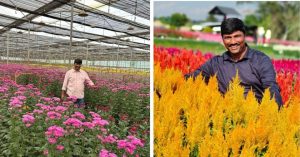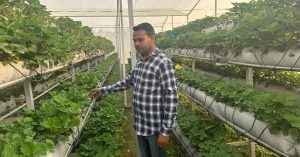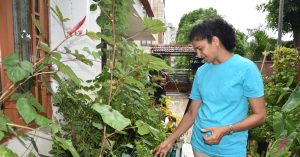How to Grow More Produce in Small Spaces? A Step-By-Step Guide to High-Density Farming
Engineer turned agriculture consultant Biju Narayanan shares his step-by-step process of high density farming, and how it helps him maximise yield even in limited spaces.
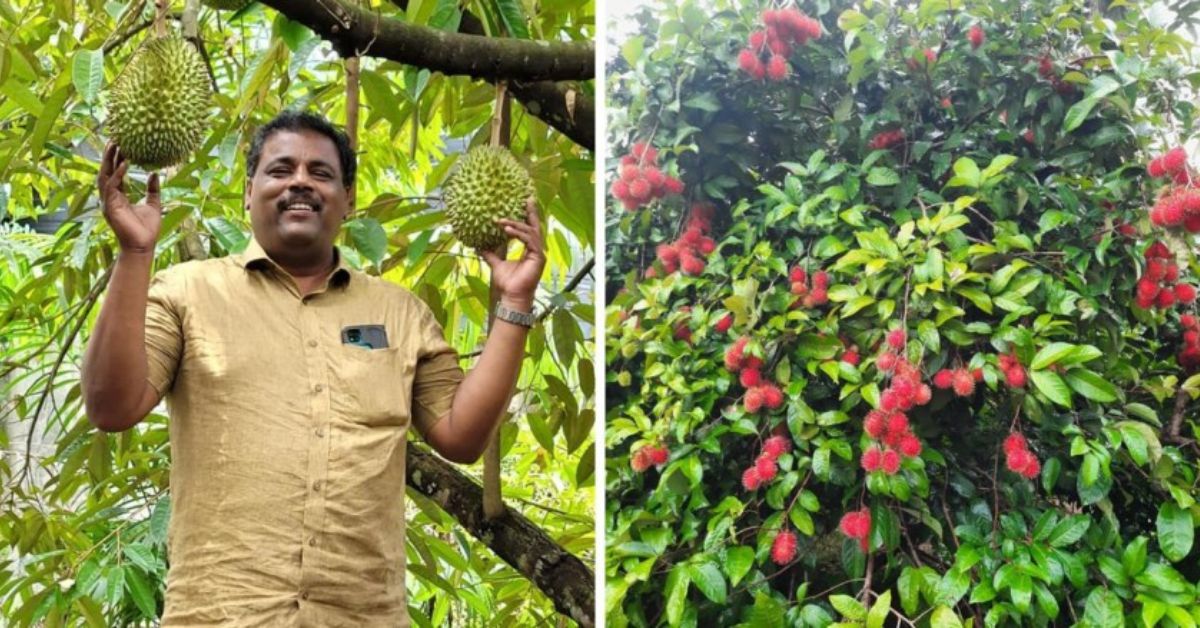
Biju Narayanan, a former engineer, quit his career about 10 years ago to take up farming. He says he has always been interested in the field and his family owned a few acres of rubber farm in Kannur.
But the land was rife with rubber plantations, which he worried would eventually degrade the soil quality. So Biju decided to cut them down after the first round of harvest and plant fruits and spices instead. This was how he took on full-time farming.
“I was already bored with corporate work. I thought, why waste life doing the mundane job when there is enough land to farm in my native place?,” he says.
Biju started off by growing pepper and cashew — two expensive and popular crops grown in Kerala. Later, he moved to planting extensive varieties of fruits alone by implementing high density farming or high density planting system (HDPS).
“Usually, fruits in Kerala are harvested during the summer. In order to make the produce available throughout the year, both regional and foreign varieties have to be planted. I have successfully practised this on my 95-acre farm. This can be done anywhere, even if the plot is small,” says Biju, owner of Ulickal Agro Farms in Kannur.
He says that choosing this method helped him get double the usual yield from one-third of the space required in conventional fruit farming.
“An average of 80 kg of each fruit is harvested from my farm every season. Another advantage is that the harvest lasts all through the year, as many varieties of fruits, both regional and exotic, are cultivated,” he explains.
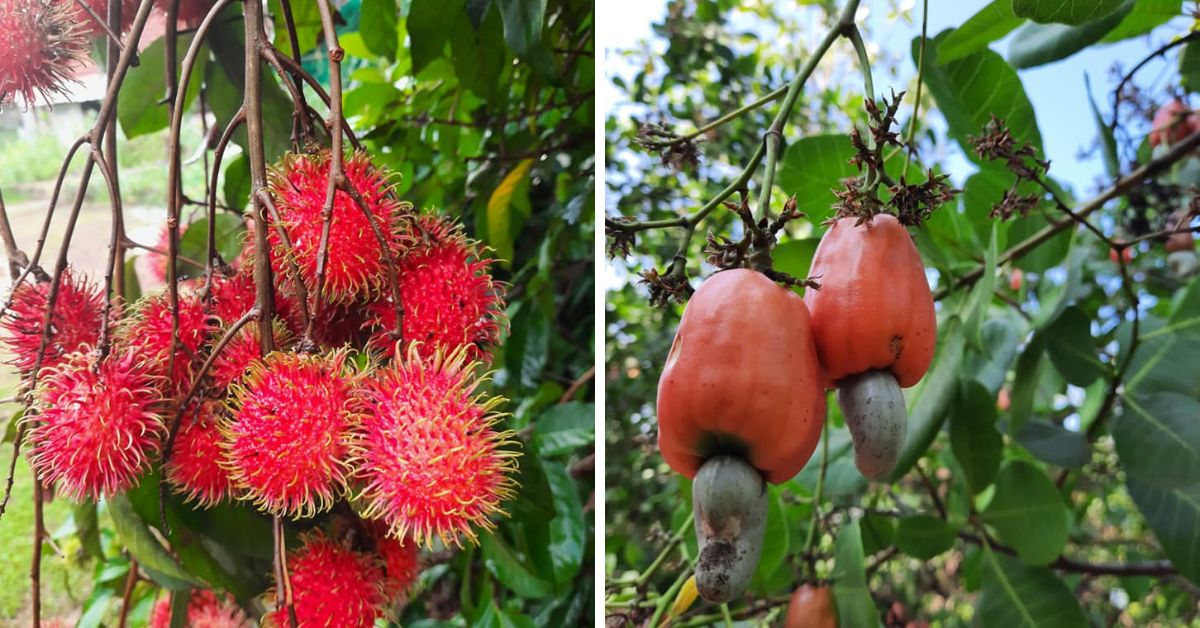
“I did extensive reading and took advice from experienced farmers in the locality to begin with. It was also a trial and error process which gets refined every season,” he adds.
What is high density farming?
This method of farming aims at efficient use of land to increase yield without increasing the amount of space used.
Biju explains, “This is a scientific farming system wherein a larger number of plants are accommodated in a smaller area. This is no different from regular farming, except it needs better planning. Usually in Kerala, farmers start fruit farms by specialising in one or two regional varieties like mango or jackfruit. This will require a large plot as both these trees are too leafy. But if both leafy and non leafy fruit trees are integrated on a single plot, it ensures full utilisation of the space and farm products.”
In other words, while a 10-cent property can hold up to 10 trees through conventional farming, opting for high density farming will let you plant over 50 trees of many varieties.
A few months ago, the 53-year-old helped an advocate named K L Abdul Salam grow fruit trees on his 12-cent property. “Abdul grows about 80 types of fruit trees on his 12-cent land. This helps him to get at least one crop at any time of the year, and requires fewer expenses for farm inputs like fertilisers, labour and pesticides.”

Biju has been using this method for about three years. “High-density cultivation is an effective method to increase productivity of high-value commercial crops, especially fruits. Apart from high yields, it maximises the efficiency of costly farm inputs.”
He adds that India’s climatic condition, and especially Kerala’s, is tropical in nature, which is ideal for fruit farming. “Even then, we are nowhere on the list of top fruit producing countries of the world. By opting for HDPS, one can double production and introduce exotic foreign varieties on their land,” notes Biju.
Apart from his 95-acre farm, Biju also runs a garden nursery and sells vegetables, fruits, flowers, ornamental and other plants.
On an average, he harvests 80 kg of each fruit from the farm, he says.
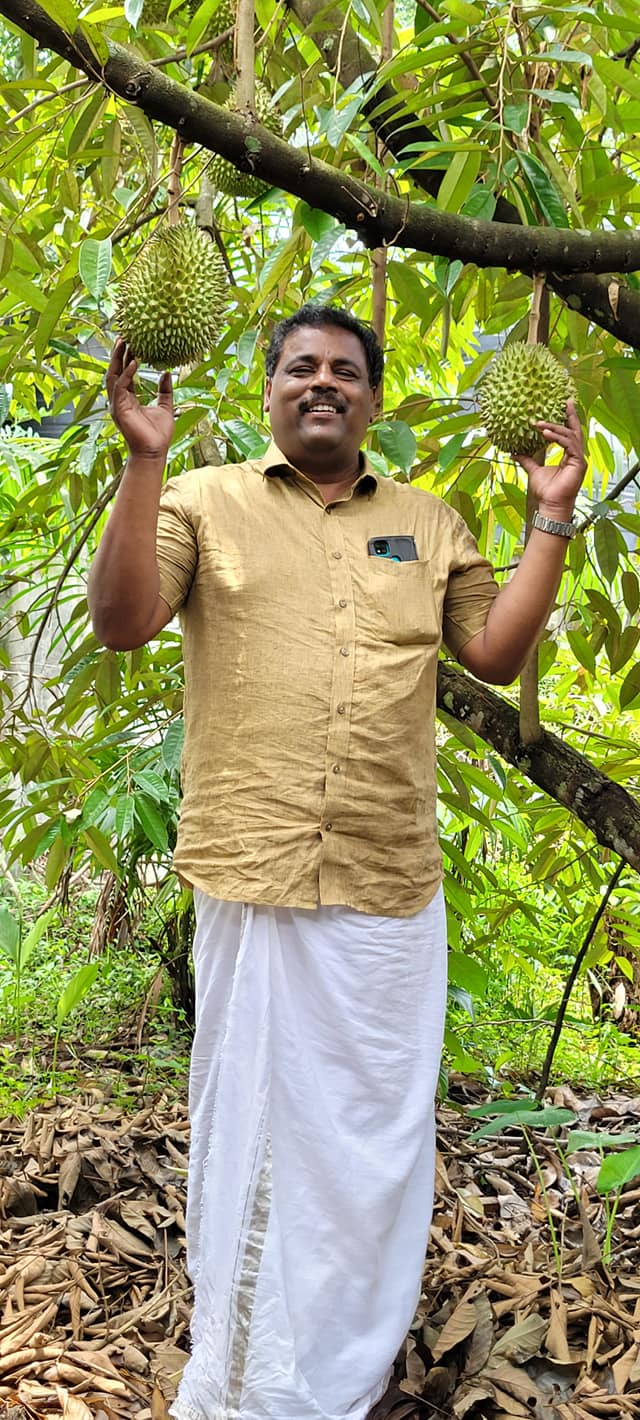
“On Abdul’s farm, we have planted five varieties each of mango, guava, jackfruit, rambutan, chikoo, mangosteen, custard apple, seedless lemon, java plum, jabuticaba, araza boi, santol, longan, kepel apple and more. However, planting and caring for crops is slightly different here than in regular farming,” he adds.
Biju explains the step-by-step process of high density farming:
- First of all, the method cannot be implemented without expert help. Someone who has already set up such a farm can assist.
- Maintain a gap of 2.5 metres between two plants.
- Pick the plant saplings from any garden nurseries or experienced farmers. Make sure they have been grown organically.
- Select the plants based on how they will grow. Choosing too many trees that will grow high or become leafy will not be a good decision in high density farming, Biju says.
- Plant them in a way that less leafy plants are placed next to those with more cover. This will ensure proper sunlight for each. Moreover, picking too many leafy plants will lead to them taking up more space. This will reduce the number of plants you can grow.
- Make sure that plants that will grow tall are not placed near short ones. This will also restrict sunlight, and the taller plant will use more nutrients from the soil, which will restrict the shorter one’s growth.
- The first three years after planting the sapling are the most important, Biju notes. During this time, you should prune and train the plants, which in turn will decide how healthy they will be.
- Training refers to controlling the direction, shape and size of plants by twisting, bending or fastening the plants. Regular training helps change the shape, size, and direction of plant growth.
- Pruning is the practice of selectively removing plant parts to manipulate them so you can grow more plants in less space.
- Abstain from using chemical fertilisers and pesticides, as these will not give a true idea of how the plants are growing. Use manure like compost, cow dung and neem oil/cake to ensure organic growth.
- If there are any plant varieties that don’t need a lot of space, place them in pots, drums or grow bags to save more space.
- If the plot has uneven sunlight distribution, remember to plant the saplings accordingly. Crops that don’t need much sunlight can be placed in shady areas.
- Almost all varieties will start giving fruits after three years. Regular watering or fertilising won’t be needed post this.
Edited by Divya Sethu; Photo Credits: Biju Narayanan/Facebook.
If you found our stories insightful, informative, or even just enjoyable, we invite you to consider making a voluntary payment to support the work we do at The Better India. Your contribution helps us continue producing quality content that educates, inspires, and drives positive change.
Choose one of the payment options below for your contribution-
By paying for the stories you value, you directly contribute to sustaining our efforts focused on making a difference in the world. Together, let's ensure that impactful stories continue to be told and shared, enriching lives and communities alike.
Thank you for your support. Here are some frequently asked questions you might find helpful to know why you are contributing?


This story made me
-
97
-
121
-
89
-
167




